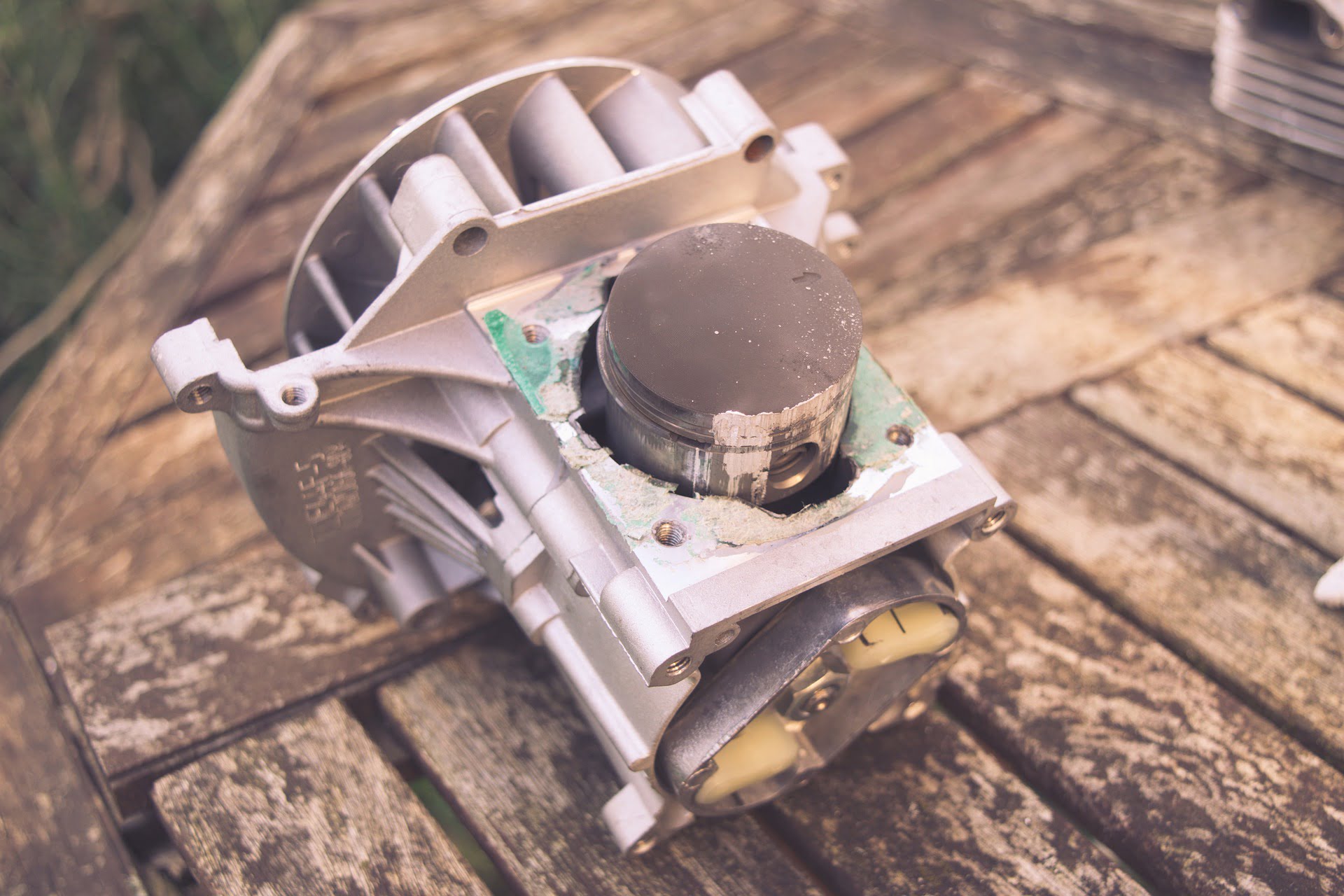Knowing how to tell if a riding lawn mower engine is seized is an important diagnostic skill. Since I usually buy “junk” (non-running) riding lawn mowers to flip, this is the first thing that I check. A seized engine doesn’t necessarily mean the machine is unsalvageable, but it does increase the repair costs.
The obvious answer to find out if a riding lawn mower engine is seized is to try and turn it over. Even though most riding lawn mowers come equipped with a starter motor, I don’t recommend using it quite yet.

When you’re just trying to find out if the engine is seized, you want to be gentle with it initially. If the engine is actually seized, you’ll do further damage to the starter motor if you attempt to use it.
Tools Needed (Commissions Earned)
Turn it Over by Hand
The simplest way to tell if an engine is seized is to try and turn it over by hand, using whatever is accessible.
Depending on the engine, you might have easy access to the flywheel. Often, you’ll have to remove the flywheel cover and maybe some plastic covers on top of that. If you can access the flywheel, you can try to rotate that. If it moves, then the engine is not seized.
Perhaps the flywheel turns but it’s difficult. In that case, you can try to “bar it over” by using a prybar on the fins to turn it. Use care in this situation as you don’t want to break a flywheel fin.
Otherwise, you can always opt for a strap wrench around the flywheel to grasp it.
If the Flywheel Doesn’t Work
Sometimes you won’t be able to get at the flywheel for one reason or another. In this case, you can try to rotate the crankshaft itself from the PTO side.
On a vertical shaft engine, the crankshaft exists the engine through the bottom. The PTO would be mounted here with a bolt into the crankshaft.
You can put a wrench on the crankshaft and try to rotate it. If it moves, then the engine is not seized.
If the Engine Doesn’t Turn Over
This still doesn’t necessarily mean the engine is seized; at least, not in the disastrous sort of way. It could just be a stuck valve, and that is a lot less problematic.
Before you start tearing the engine apart, make sure that the drive belts and PTO belts are removed. We don’t want any extra resistance. If anything else is engaged on the engine that can make it that much more difficult to turn over.
Along those lines, you can remove the spark plug to release the compression. This can aid in turning the engine over as well, but be sure to clean the area and cover the plug hole if you do this. We don’t want to add more debris to the cylinder.
This is also a great opportunity to inspect the cylinder bore if you have a borescope. It will give you a visual indication of the condition of the bore.
If there’s significant rust buildup in the cylinder, then there’s a good chance that the piston is seized. Also, while you’ve got the spark plug out go ahead and lubricate the bore. Lubrication will aid in freeing up the parts.
The Last Way to Test
The final option is usually to remove the cylinder head. This will allow you direct, visual access to the top end of the engine. You’ll quickly be able to tell if there’s a stuck valve that’s not opening or if the piston itself is seized. Even if the cylinder bore looks clean, the connecting arm could be stuck in place.
At this point, if it’s still seized, the only solution is to tear the engine apart. From here, you’ll be able to find out what caused the damage and if it’s worth repairing.
Recap
Again, a seized engine doesn’t mean the death of a machine like it’s often talked about. For me, that’s just a negotiating tactic in my favor to decrease the purchase price. Yes, it might be cost prohibitive to repair the engine. Even so, it will provide plenty of parts for future repairs.
It’s quite simple how to tell if a riding lawn mower engine is seized or not. It’s the first thing I check when diagnosing a machine because it steers the course as far as repairs go. Just remember, there can be a lot of problems that mimic a seized engine, so don’t give up on it until it’s confirmed.
As an Amazon Associate I earn from qualifying purchases.

4 thoughts on “How to Tell if a Riding Lawn Mower Engine is Seized”